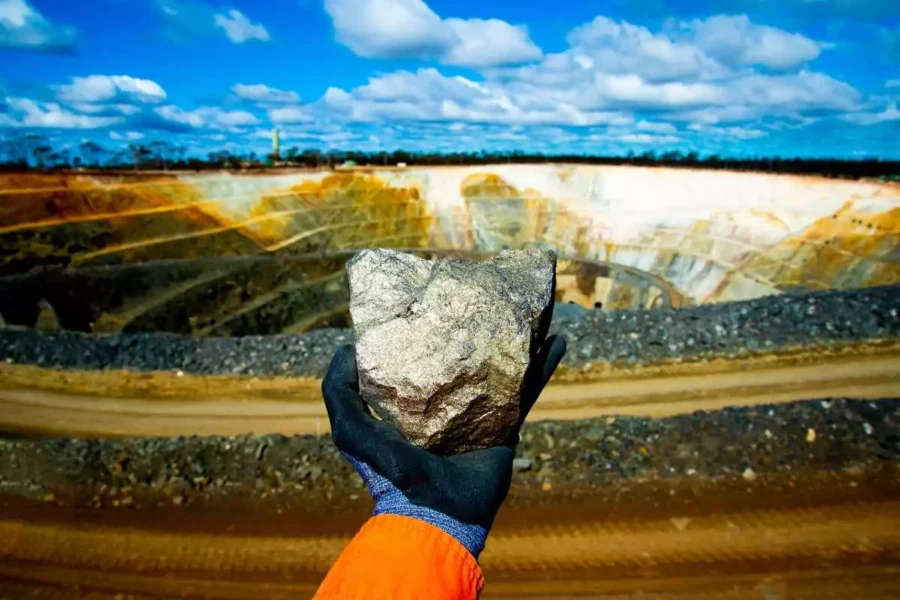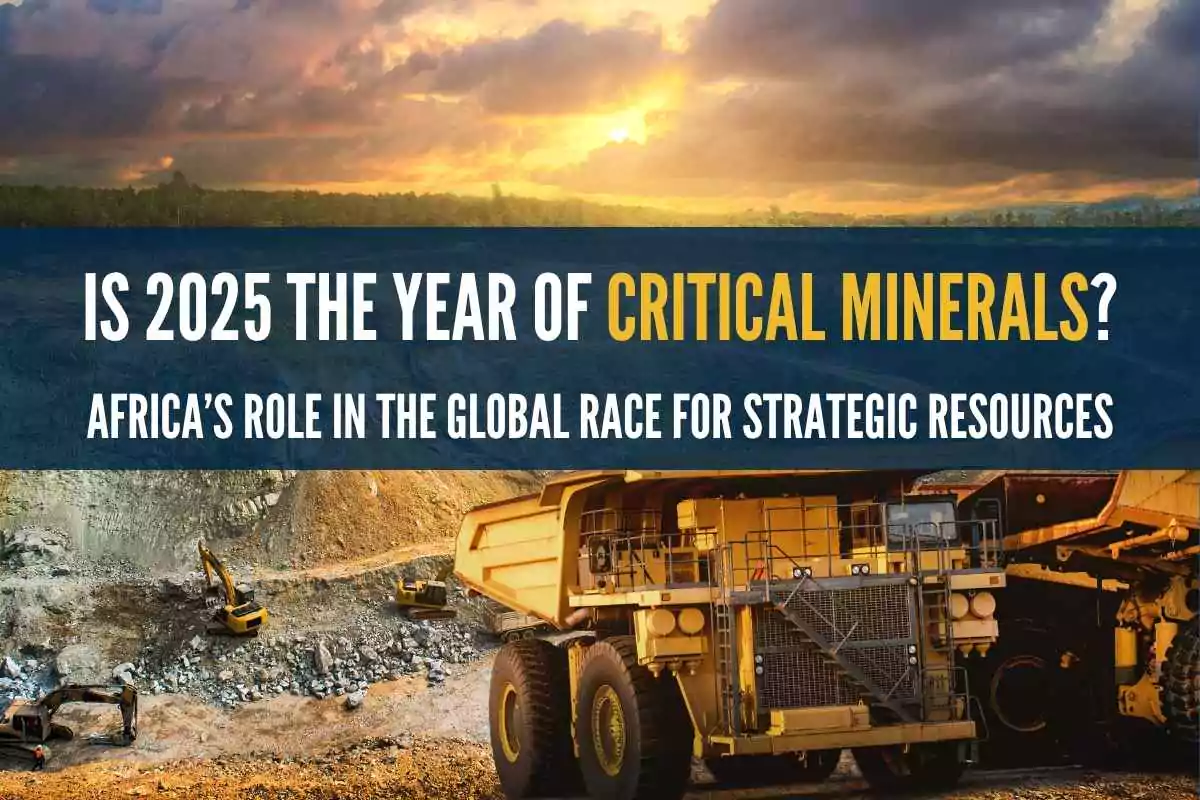Is 2025 the Year of Critical Minerals?
Africa’s Role in the Global Race for Strategic Resources
In 2025, the global mining landscape is undergoing a seismic shift. The spotlight has turned sharply toward critical minerals, resources essential to powering the world’s clean energy transition, digital economy, and defense infrastructure.
Minerals such as lithium, cobalt, graphite, rare earth elements, and copper are no longer viewed as mere commodities; they are now considered strategic assets. And Africa, with its vast untapped reserves, is quickly emerging as the new epicenter of this high-stakes race.
As global powers scramble to secure reliable and diversified supplies, countries like Liberia, Tanzania, the Democratic Republic of Congo (DRC), and Namibia are rising to prominence. These nations are not only rich in critical minerals but are also reforming their mining sectors to attract investment, promote value addition, and ensure long-term sustainability.
With demand at an all-time high and geopolitical tensions reshaping global supply chains, 2025 is shaping up to be the definitive year of critical minerals, a tipping point where resource-rich African nations could redefine their role in the global economy.
Key Highlights
- Critical minerals like lithium, cobalt, and graphite are essential for EVs, solar panels, wind turbines, and digital tech, and demand is skyrocketing in 2025.
- Liberia is emerging as a new frontier for rare earth exploration, backed by reforms focused on transparency, digitization, and green mining partnerships.
- Tanzania is leading Africa’s battery metals surge, with active graphite and nickel projects, and a strong push toward in-country processing and infrastructure development.
- Africa is becoming central to global supply chains as nations seek to reduce reliance on China and diversify their access to strategic resources.
- 2025 marks a global shift in mining priorities, with Africa poised to play a defining role in the energy transition and digital economy of the future.
What Are Critical Minerals and Why Now?
Critical minerals refer to a group of raw materials that are essential for modern technologies but face a high risk of supply disruption. These include lithium, cobalt, nickel, graphite, rare earth elements, copper, and others. They are fundamental in the production of electric vehicle (EV) batteries, renewable energy systems like wind turbines and solar panels, and even in everyday items like smartphones and semiconductors. Their strategic importance has grown dramatically in recent years, especially as countries transition to low-carbon economies and digital infrastructure becomes more globally interconnected.
The surge in demand for these minerals is being driven by several converging trends. First, the EV market is booming, with projections indicating it will double again by 2027. Secondly, aggressive clean energy targets set by the European Union, China, and the United States are putting enormous pressure on supply chains to scale up quickly. Finally, geopolitical tensions, particularly around China’s near-monopoly on processing and supply of rare earths and other key minerals, have made mineral independence a top priority for Western governments.
In 2025, the world is experiencing a clear supply-demand crunch. Many of the known reserves are already being heavily mined, while permitting and regulatory bottlenecks slow down new projects in developed countries.
This is causing the global mining industry and policymakers to shift focus toward underexplored, resource-rich regions like Africa. With vast untapped reserves and increasing political will to responsibly develop them, African countries are now emerging as key players in the global critical minerals race.
Liberia: The Underdog in the Spotlight
Liberia is traditionally known for its iron ore and gold exports, but the tide is changing. In early 2025, exploration licenses for rare earth elements and lithium have been awarded to junior miners backed by U.S. and Australian capital.
The Liberian government, under its new Poverty Reduction and Growth Strategy, is prioritizing mineral development with a focus on transparency and local beneficiation. Recent reforms include:
- Digitized mining cadastre for real-time license tracking
- Community engagement frameworks to mitigate past grievances
- Promotion of green mining tech through public-private partnerships
“We see Liberia as the next frontier for critical minerals,” says an Australian geologist based in Monrovia. “It’s underexplored and undervalued, perfect conditions for early movers.”
Tanzania: Battery Metals on the Rise
Tanzania is fast becoming a regional leader in critical minerals, especially graphite, nickel, and lithium. The Mahenge and Nachu graphite projects are attracting attention from Chinese, Indian, and European investors alike.
In 2025:
- A new battery metals export corridor is being constructed, linking inland mines to the port of Dar es Salaam
- The government has announced a 50/50 value-sharing model with foreign investors
- Artisanal miners are being integrated into formal supply chains for lithium and rare earth exploration zones
Key Highlights
| Project | Mineral | Partner Country | Status (2025) |
|---|---|---|---|
| Mahenge | Graphite | Australia | Production |
| Kabanga | Nickel | UK/US | Construction |
| Lake Natron | Lithium | China | Feasibility Study |
Tanzania’s progressive stance on local processing is setting a precedent. Investors can no longer just “dig and ship”, they must invest in smelters, refineries, and skills training.

Africa’s Strategic Importance in 2025
In 2025, Africa has moved from the periphery to the center of the global conversation around critical minerals. Once overlooked in favor of more developed markets, the continent is now seen as essential to securing the raw materials needed for the clean energy transition, advanced manufacturing, and geopolitical resilience. With the world’s top economies racing to reduce their dependence on China, especially for minerals like rare earth elements, cobalt, lithium, and graphite, Africa’s diverse and largely untapped reserves have become a strategic priority.
What sets Africa apart is not just its mineral wealth, but its timing. As traditional sources become increasingly politicized or depleted, Africa offers a new frontier that aligns with the urgent global demand for supply chain diversification, ethical sourcing, and green industrialization. Countries like Liberia, Tanzania, Namibia, Zimbabwe, and Ghana are leveraging this moment by reforming mining regulations, inviting strategic partnerships, and developing infrastructure to support local beneficiation and export.
Africa’s critical mineral reserves are becoming central to global strategies. As Western nations seek to diversify away from Chinese-dominated supply chains, they are:
- Establishing mineral partnerships with African states (e.g., the U.S.-Africa Critical Minerals Agreement signed in early 2025)
- Funding infrastructure and exploration through the World Bank and African Development Bank
- Backing local beneficiation programs to align with ESG goals
Challenges
While the race for critical minerals has brought renewed attention and investment to Africa, the path forward is not without obstacles. Unlocking the full value of the continent’s resources requires more than just exploration, it demands a long-term commitment to sustainable, inclusive development. From logistical bottlenecks to governance issues, African nations and their partners must confront persistent structural challenges that could hinder progress if not addressed head-on.
Despite optimism, challenges remain:
- Infrastructure gaps still delay production timelines
- Regulatory risks and shifting mining codes unsettle investors
- Environmental and social governance (ESG) concerns require careful navigation, especially with local communities
Yet, Africa’s potential is undeniable. The continent holds:
- 70% of the world’s cobalt (mostly in DRC)
- 50% of global manganese reserves
- Significant lithium, graphite, and REE potential across Zimbabwe, Namibia, Ghana, and Rwanda
Final Thoughts: Is 2025 Really the Year?
Yes, 2025 marks the inflection point. It’s no longer just about oil and gold. It’s about who controls the materials that power our batteries, grids, and future tech. And Africa, with countries like Liberia and Tanzania leading the charge, is rising fast.
Investors, governments, and tech companies are finally waking up to what African policymakers and geologists have known for decades: The future is buried in Africa’s soil.

